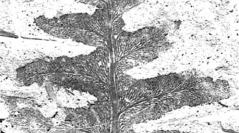

 Comptes Rendus Palevol
4 (6-7) - Pages 593-608
Comptes Rendus Palevol
4 (6-7) - Pages 593-608The recovery of the Triassic land flora after the end-Permian biotic crisis has not been studied in detail except in North China where examination of a complete sequence of Permian–Triassic strata containing fossil plants revealed that the recovery lasted until the end of the Middle Triassic. Our analysis of the Triassic floras of Europe shows that their recovery began, as in North China, with the proliferation of the lycopsid Pleuromeia during the Early Triassic and that it proceeded with the resurgence of the conifers in the early Middle Triassic (Early Anisian), the return of the cycadophytes and the pteridosperms in the Late Anisian and the progressive evolutionary modernization of the subsequent. This study shows that the climate played an essential role and that the temperature gradient from the equator to the poles was low. The fact that Pleuromeia was the most distinctive feature of the Early Triassic all over Eurasia and in the southern continents suggests that this lycopsid was an opportunistic pioneer plant which took advantage of the post-crisis vacuity of the environment to proliferate, preparing sites for recolonization with the plants having survived in refugia.
End-Permian life crisis, palaeogeography, palaeoclimate, palaeoecology, Triassic land-plant recovery, China, Euramerica, Gondwanaland, Ssurvival and recovery strategies, refugia